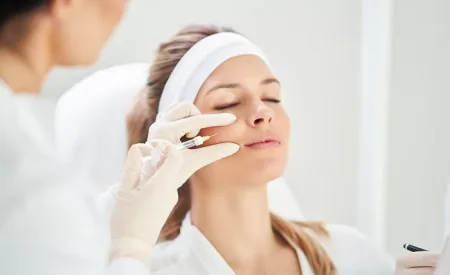Regardless of age, breast health is a vitally important topic for women. Not only can an understanding of breast anatomy intricacies enable people to make informed health decisions, but learning the factors that contribute to the risk of breast cancer can, too. It’s not just about finding the right balconette bra, breasts are complex organs that are able to indicate any number of things. To that end, detailed below is just some of the information that individuals should know about breast health, including the breast structure and the key factors linked to the risk of breast cancer.
Breast Anatomy
There’s no escaping the fact that the breast is a complex organ due to its composition of various tissues, each of which has its distinct functions. Therefore, truly appreciating breast health means understanding its anatomy in further detail:
- Connective tissue: This provides the breast’s structural support, meaning that it holds everything in place.
- Lymph nodes: These are small, bean-shaped structures that are scattered throughout the breast and underarm regions. They play a significant role in trapping harmful substances like cancer cells and filtering lymphatic fluid.
- Adipose tissue: This is the fatty tissue that surrounds and cushions the mammary glands. The amount of this tissue can vary among individuals, which influences breast density and size.
- Mammary glands: These are responsible for milk production during lactation. They consist of lobules, where milk is produced, and ducts that transport milk to the nipple.
Breast Cancer Risk Factors

Unfortunately, breast cancer is the leading cause of cancer-related deaths for women globally. Equally as sad is the fact that various risk factors are beyond our control, meaning it can sometimes be tricky to actively take steps to reduce the risk. To that end, detailed below are some of the key factors linked to the risk of breast cancer:
- Hormone replacement therapy (HRT): It’s thought that the prolonged use of combined hormone replacement therapy (estrogen and progestin) could slightly increase the risk of breast cancer.
- Personal history: Women who have experienced breast cancer or non-cancerous breast conditions (like atypical hyperplasia) in the past are at heightened risk.
- Radiation exposure: Previous radiation therapy exposure, particularly during childhood, can increase risk.
- Lifestyle factors: Smoking, excessive alcohol consumption, lack of physical activity, and poor diet are all associated with a heightened breast cancer risk.
- Breast density: Women with denser breast tissue have a heightened risk, as this can make it harder to detect cancer on mammograms.
- Reproductive history: Women who have had their first child after 30 or women who have never given birth at all might have a slightly heightened risk.
- Hormone levels: Elongated exposure to estrogen during hormone replacement therapy, late menopause, or early menstruation can increase risk.
- Genetics and family history: Genetic mutations like BRCA1 and BRCA2 can heighten risk. Similarly, women with close relatives who have had breast cancer are more susceptible.
- Gender: Breast cancer can impact anyone of any gender; however, it’s far more common in women. In fact, men account for fewer than one percent of all breast cancer cases.
- Age: Growing older is another considerable risk factor, with most breast cancer cases presenting themselves in women over 50. Despite this, women younger than this can also fall victim to the disease.
Breast Health and Early Detection
The earlier that breast cancer is detected, the better. It’s for this reason that women should check their breasts regularly and attend mammogram appointments. During the early stages of breast cancer, the chances of survival are significantly higher.



